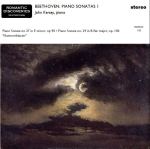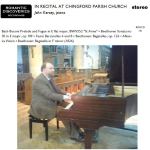Purchasing
Please browse our Catalogue and Archive to see the CDs available for purchase. Each CD has a purchase link to add it to your shopping cart. Postage must be added separately to the cart using the buttons below.
All Romantic Discoveries Recordings CD sales are transacted online via this website. We do not supply shops or other online outlets. We can only accept credit cards via PayPal.
Postage
Postage must be added separately to your shopping cart using the buttons below.
Postage within the United Kingdom and European Union is £5 per order. This is not a tracked service. If you would prefer to use a tracked or expedited postal service, please contact us for a quotation before placing your order.
The postage charge must be paid for by adding it as a separate item to your order cart. This can be done by clicking the button below:
If you are outside the United Kingdom and European Union there is a postage charge of £15 per order. This includes a delivery service that is tracked but not expedited, and is not guaranteed to be delivered within a specified time. If you would prefer to use an expedited delivery or courier service please contact us for a quotation before placing your order.
The postage charge must be paid for by adding it as a separate item to your order cart. This can be done by clicking the button below:
Terms and Conditions
For full terms and conditions, please click here.
Audio samples
Audio samples of our CDs as well as some non-catalogue recordings can be listened to online here.
Rediscovering significant piano music of the past
 We live in an age of mysteries. The omnipresence of today’s recordings of classical music, many of which are of little-known repertoire, might lead us to believe that there is little left of the past to discover. Yet we have only to move back in time by a little over a hundred years to find the ghosts of a forgotten Romanticism waiting to be reanimated and to present to us an aesthetic very different from that of our own age. This was the era when the piano was at the centre of musical life; at the heart of the home and at the crux of the conception of the Romantic as artist.
We live in an age of mysteries. The omnipresence of today’s recordings of classical music, many of which are of little-known repertoire, might lead us to believe that there is little left of the past to discover. Yet we have only to move back in time by a little over a hundred years to find the ghosts of a forgotten Romanticism waiting to be reanimated and to present to us an aesthetic very different from that of our own age. This was the era when the piano was at the centre of musical life; at the heart of the home and at the crux of the conception of the Romantic as artist.
 Romantic Discoveries Recordings seeks to present innovative world première CD recordings of piano music of the Romantic era by award-winning pianist John Kersey, informed by his extensive research into the performance history of the Romantic era, and recorded in a natural ambience evoking the acoustic of the typical Romantic salon. These recordings are not intended to be comparable to audiophile CD releases; they are edited by the pianist himself and aim at an honest, direct and sympathetic portrayal of music that is often being introduced to the listener for the first time.
Romantic Discoveries Recordings seeks to present innovative world première CD recordings of piano music of the Romantic era by award-winning pianist John Kersey, informed by his extensive research into the performance history of the Romantic era, and recorded in a natural ambience evoking the acoustic of the typical Romantic salon. These recordings are not intended to be comparable to audiophile CD releases; they are edited by the pianist himself and aim at an honest, direct and sympathetic portrayal of music that is often being introduced to the listener for the first time.
“A great feast for the Beethoven connoisseur” (of CD19)
James Green, author, The New Hess Catalog of Beethoven’s Works
“A true and nowadays unique artist, a pianist who has discovered a quantity of really unsung and memorable piano music…In my view, it is at the moment the most remarkable serial of unsung piano music of a high level, so not “lovely pieces” from days gone by, but the ambitious search for original and lasting works.”
Dr. Klaus Tischendorf, Burgmueller.com
From 2023 onwards, the Romantic Discoveries catalogue has been expanded to include a number of recordings of standard repertoire with which John Kersey feels a particular affinity. Beginning in 2023, over forty new CDs have been released, including recordings made during the national lockdown of 2021 and the series of twenty-eight CDs of the piano music of Walter Niemann.
All compositions recorded and released by Romantic Discoveries Recordings, and all artworks used on the CD covers, are in the public domain in the United Kingdom, from where all CDs are made and sent. For copyright reasons, our recordings are not available to purchase in Mexico and certain other countries which have a copyright term that differs from that of the United Kingdom.
Affiliations
Romantic Discoveries Recordings is an affiliated research centre of European-American University.












You must be logged in to post a comment.